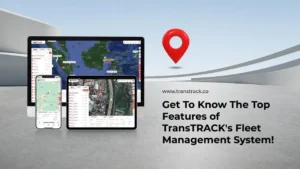Know What is Direct Distribution, its Benefits, Process, and Examples
Posted on December 1, 2023 by Nur Wachda Mihmidati

In the ever-growing business world, the concept of distribution plays an important role in connecting producers with consumers. One form that is often encountered is direct distribution.
Direct distribution is one of the most important product distribution strategies for businesses today. In an increasingly connected and competitive world, this distribution allows businesses to bring in greater profits more effectively.
In this article, TransTRACK will discuss in detail about what direct distribution is, its advantages, processes, and examples. So, if you want to implement this strategy, keep reading this article until the end!
Definition of Direct Distribution
Direct distribution is a method or strategy in which products or services are directly channeled from producers to consumers without involving intermediaries such as distributors or retailers. In this context, the supply chain becomes shorter and allows manufacturers to have more control over their products.
This strategy requires producers to be responsible not only for the production process, but also the distribution and direct marketing of their products. This strategy has the advantage of increasing revenue and saving the cost of distributing goods. This strategy is one of three types: direct distribution, semi-direct distribution, and indirect distribution.
Advantages of Direct Distribution
By choosing this strategy as a product distribution strategy, companies will gain a number of significant benefits. Let’s take a look at some of the benefits of this strategy:
Cost Savings
This strategy can bring significant cost savings to the company. By eliminating intermediaries such as distributors or retailers, the company can reduce the profit margin it has to pay to them. This allows manufacturers to offer their products at more competitive prices or earn higher profits.
Full Control
One of the main advantages of this strategy is the complete control it entails. Manufacturers have the ability to control every aspect from production to marketing and distribution. This provides great flexibility to adjust business strategies according to market changes or trends without the need for external approval or coordination.
Direct Engagement with Consumers
In an increasingly globally connected business environment, direct interaction between producers and consumers can be a valuable asset. This engagement helps build closer relationships, accurately understand consumer needs, and respond quickly to changing feedback.
Market Risk Reduction
With this process, producers have greater visibility into market demand. They not only listen to feedback from intermediaries but gain direct insights into consumer preferences. This can help reduce the risk of products not selling or losing competitiveness in the market.
Stages of the Direct Distribution Process
This process involves several stages that need to be considered by companies adopting this strategy. The following is an overview of these stages:
- Production: The initial stage of the process is the production of products or services that will be distributed directly to consumers.
- Marketing and Promotion: Manufacturers should be actively involved in the marketing and promotion of their products. This involves identifying target markets, developing marketing messages, and executing promotional campaigns.
- Direct Sales: Direct selling involves direct interaction with consumers, either through physical stores, e-commerce platforms, or other direct selling channels.
- Physical Delivery and Distribution: The physical delivery and distribution process is the responsibility of the manufacturer in this strategy. They have to ensure that the product reaches the consumer on time and in good condition.
- Settlement and Customer Service: At this stage, the goods that reach the customer are ensured to be safe and suitable. Responsive and effective customer service is essential to respond to questions, complaints, or feedback from consumers.
Examples of Direct Distribution Implementation
The application of this strategy has undergone significant development in various industries. Here are some examples of common applications of this strategy:
E-Commerce or Online Shop
One of the most obvious examples of this strategy occurs in the e-commerce or online shop industry. Platforms like Shopee, Tokopedia, and Lazada give manufacturers direct access to consumers without involving a long distribution chain.
Through online platforms, manufacturers can easily market and sell their products directly to customers, thus creating a more effective and efficient shopping experience.
Door to Door Sales
Door to door selling is the simplest conventional way of implementing direct distribution. In this way, manufacturers can directly offer and distribute their products from door to door, without the need to go through a third party.
To implement this method, companies will usually hire sales to go directly to the field. If the size of the product offered is portable, the field sales team will directly carry it to offer to customers.
In an era where business dynamics are constantly changing, direct distribution remains one of the most relevant and effective strategies. By understanding the essence of direct distribution, its benefits, process stages, and seeing examples of its implementation, companies can take the right steps towards a more efficient and sustainable future.
The implementation of Fleet Management System (FMS) technology from TransTRACK can be the key to improving the efficiency of the direct distribution process. FMS allows companies to have full control over their fleet with real-time tracking, ensuring route efficiency, optimal fuel management, and accurate management of delivery times.
Overall, the implementation of FMS not only optimizes the company’s operations, but also creates a direct distribution environment that is efficient, adaptive, and responsive to market needs. Thank you for reading this article until the end, hopefully it will be useful.
Recent Post
Topic :
 Bahasa Indonesia
Bahasa Indonesia









